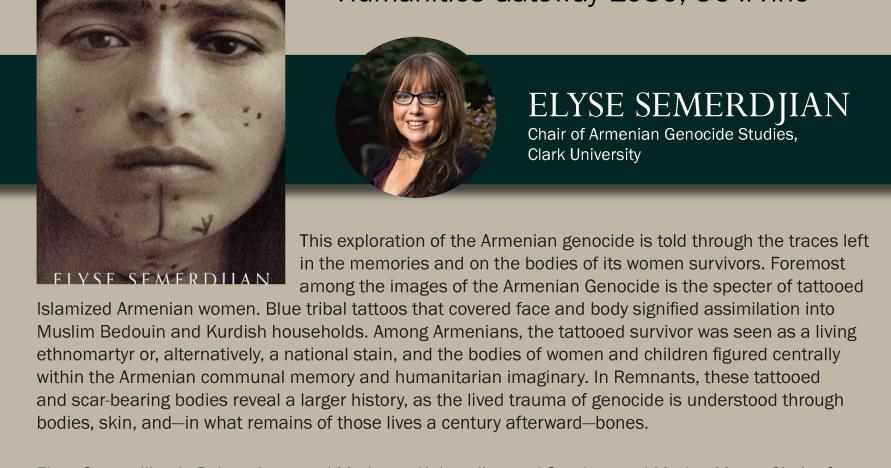
This exploration of the Armenian genocide is told through the traces left in the memories and on the bodies of its women survivors. Foremost among the images of the Armenian Genocide is the specter of tattooed Islamized Armenian women. Blue tribal tattoos that covered face and body signified assimilation into Muslim Bedouin and Kurdish households. Among Armenians, the tattooed survivor was seen as a living ethnomartyr or, alternatively, a national stain, and the bodies of women and children figured centrally within the Armenian communal memory and humanitarian imaginary. In Remnants, these tattooed and scar-bearing bodies reveal a larger history, as the lived trauma of genocide is understood through bodies, skin, and—in what remains of those lives a century afterward—bones.
Elyse Semerdjian is Robert Aram and Marianne Kaloosdian and Stephen and Marian Mugar Chair of Armenian Genocide Studies at the Strassler Center for Holocaust and Genocide Studies at Clark University. She is a social historian of the Ottoman Empire whose research focuses on the experiences of women and the empire’s Armenian subjects. She has authored “Off the Straight Path”: Illicit Sex, Law, and Community in Ottoman Aleppo (Syracuse University Press, 2008) and Remnants: Embodied Archives of the Armenian Genocide (Stanford University Press, 2023) as well as several articles on gender, Ottoman Armenians, urban history, and law in the Ottoman Empire.
Complimentary parking will be available in Lot 7 at the intersection of Mesa Road and West
Peltason Drive. A parking attendant will be present to assist you from 5:30 to 7:00 pm.
Questions? Email mhkanda@uci.edu or call (949)824-6521

